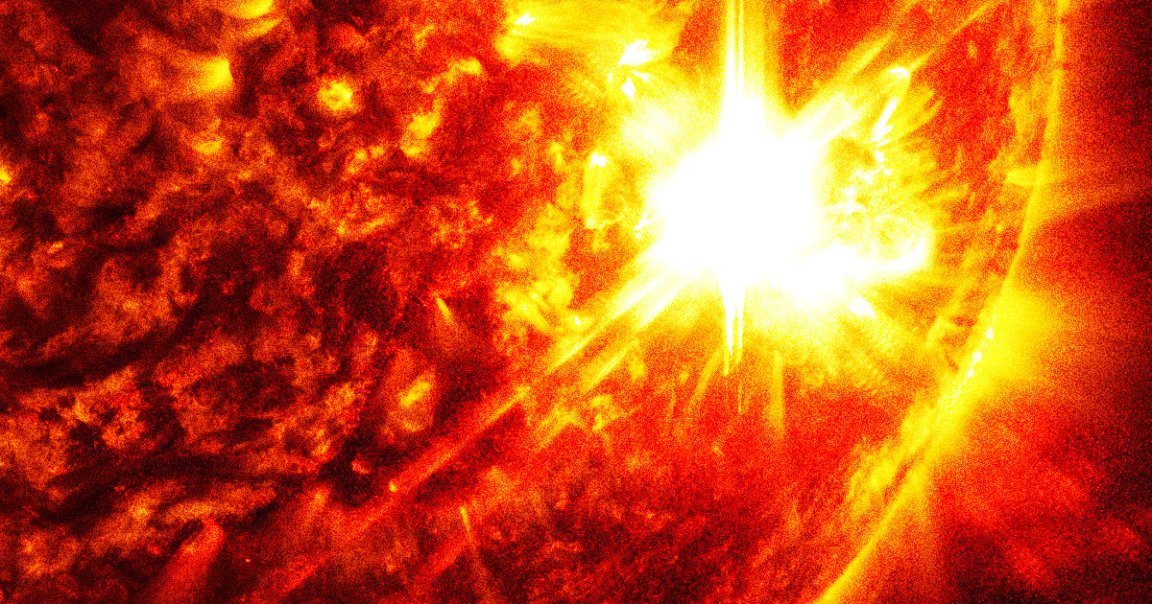
Solar Flare Up
Miss out on the stunning aurorae borealis that graced the night sky a few weeks ago? You may be in luck.
That’s because the sunspot that let loose those epic coronal mass ejections (CMEs) responsible for the rare spectacle — but also blackouts, so be warned — is ramping up again, meaning that our atmosphere may well be bombarded with another geomagnetic storm.
Hunker down or look up — it’s your choice.
The sunspot, AR3664, rotated back into view on Monday, and in a convincing show of force, immediately erupted in an X-class solar flare, according to SpaceWeather.com, the most powerful of its kind.
The eruption demonstrates that the sunspot probably has more explosive outbursts ahead — though the solar flares themselves are unlikely to trigger a geomagnetic storm on a similar magnitude to the one a few weeks ago.
Repeat Offender
Our star erupts pretty frequently, blowing plasma and incredible bursts of energy into space. These often — though not always — occur in sunspots, temporary dark regions on the Sun’s surface that bear increased solar activity.
When the Sun approaches solar maximum — as it’s doing right now — these outbursts become more common.
The G5 geomagnetic storm that wreaked havoc on our atmosphere earlier this month was caused by not one but three coronal mass ejections, in which an enormous cloud of hot plasma and volatile magnetic fields are blown off from the Sun and hurled into space.
The beautiful aurorae that you may have witnessed in the sky are the result of all those charged particles going haywire on the gases of our atmosphere. Those same particles, though, can also disrupt and even damage electronics.
Bright Spot
While there’s no Earth-bound CME being forecasted yet, they are often heralded by solar flares like the one that just took place. If we were to see more such outbursts, then the odds of another CME occurring would be higher.
Still, even if one or even multiple were to take place, they’d have to be aimed just the right way, too, otherwise they’d fly past our planet.
In sum, there’s a lot that needs to go right (or wrong) to recreate the solar storm from earlier this month. But for the next few weeks, we’ll have a good vantage point of the sunspot before it rotates out of view, so keep your eyes peeled for more sunny news.
More on the Sun: NASA Watching as Sun Blasts Mars to See Effect on Astronauts